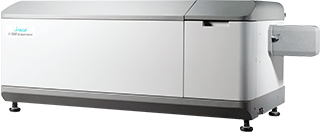
Optical activity can result from a number of effects. Also, it was shown that only a small fraction of enantiopure ligands in a mixed ligand system is sufficient to induce significant optical activity to the clusters 28. Chiroptical properties in the ultraviolet-visible were found to be strongly size-dependent 24. Besides circular dichroism (CD) studies on the electronic transitions, the conformational analysis of the stabilizing ligand was demonstrated, using vibrational circular dichroism in the infrared 20, 21, 25. Protecting ligands include several derivatives of cysteine 10, 20, 21, 22, 23 as well as 'artificial' ligands such as binaphthyl systems 24, 25, 26 or other small organic thiolates 27. Since then, numerous examples of more or less defined systems have been reported 19. Optical activity in Au:thiolate nanoclusters has first been observed by Schaaff and Whetten in 1998 (refs 17, 18). Among these small nanoparticles (in the following referred to as nanoclusters), thiolate-protected systems of the general formula z (SR: thiolate z: charge) have evolved as the most studied class, because of their extraordinary stability. As gold nanoparticles exhibit localized surface plasmon resonances at diameters above ca 2 nm, their smaller analogues (up to ca 200 Au atoms) show interesting, molecular properties 16. The use of plasmon resonances in chiral metamaterials has been discussed and employed in several examples 11, 12, 13, 14, 15. The chirality of gold nanoparticles has recently become an intensively studied field of modern nanoscience as it opens new possibilities in catalysis and sensing applications 8, 9, 10. A similar situation is found for Au 38(SR) 24 clusters (see below) 6, 7.

Because the p-MBA ligand used is achiral, both enantiomers are observed in the unit cell of the crystal.

Moreover, it was found that the arrangement of the staples on the cluster surface forms a chiral pattern 5. An unusual bridged binding motif between gold and sulphur ('staple motif') was evidenced in which the sulphur atoms become chiral centres on adsorption. determined the structure of the gold nanocluster Au 102( p-MBA) 44 ( p-MBA: para-mercaptobenzoic acid) by X-ray crystallography 5.

This local chirality can be observed by scanning tunnelling microscopy 4.Īn analogous situation was recently discovered on thiolate-protected gold particles or clusters. Chiral domains are then formed on the surface with equal abundance of left- and right-handedness. Such phenomena have been studied on metal surfaces, where an adsorbate lattice can destroy the reflection symmetry of the metal surface underneath. If chirality arises in such a way through the bonding of achiral constituents, a racemic mixture is obtained. This may lead to a reduced symmetry of the adsorbate complex or to chiral distortions of the molecule owing to its interaction with the surface. This emergence of chirality is due to the restriction of the molecules to two-dimensional space on adsorption. In addition, achiral molecules can form chiral patterns on achiral surfaces 4. For example, achiral molecules may turn chiral on adsorption on a surface, even if the latter itself is not chiral 1, 2, 3. However, chiral assemblies can also emerge from achiral constituents.

Whereas the origin of homochirality on earth is still unclear, it is now evident that many biological macromolecules are built from chiral building blocks. Chirality is ubiquitous in nature and has tremendous impact on biology, medicine, and pharmaceutical sciences.


 0 kommentar(er)
0 kommentar(er)
